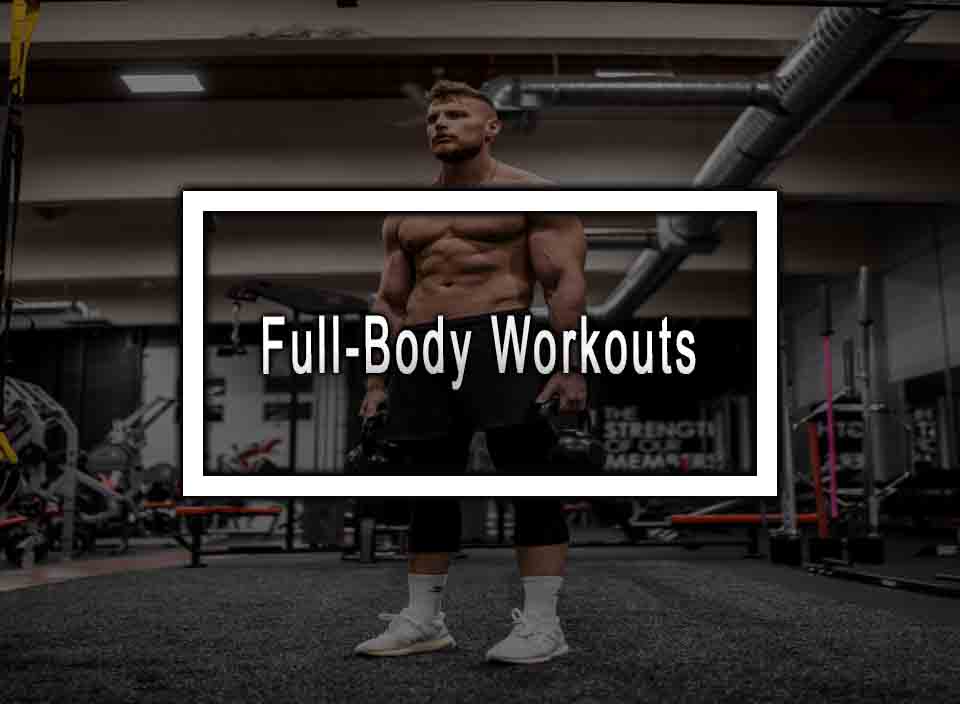Here Are Some Basic Full-Body Workouts
Many people have different ideas of what counts as a full-body workout. At its most basic level, a full-body workout is a type of exercise that involves working out all the major muscle groups in your body in a single session. A lot of people struggle with figuring out how to get a full-body workout, but the reality is that it’s not difficult at all. You don’t need a lot of fancy equipment or to spend hours at the gym to get a good full-body workout. In this article, we’ll talk about some of the best ways to get a full-body workout, including some basic exercises and a few tips to help you make the most of your workout.
Basic Full-Body Exercises
If you’re new to working out or just looking for some simple exercises to include in a full-body workout, here are a few basic exercises to get you started.
- Squats: Squats are a great exercise for working your legs, glutes, and core. To do a squat, stand with your feet shoulder-width apart, lower your body as if you’re going to sit in a chair, then stand back up.
- Push-ups: Push-ups are great for working your chest, arms, and core. To do a push-up, start in a plank position with your hands shoulder-width apart, lower your body towards the ground, then push back up.
- Lunges: Lunges are another great exercise for your legs and glutes. To do a lunge, step forward with one foot while bending your knee, then step back and repeat on the other side.
- Burpees: Burpees are a full-body exercise that combines a squat, push-up, and jump. To do a burpee, start in a standing position, lower your body into a squat, do a push-up, then jump up and repeat.
- Plank: Planks are a great exercise for your core. To do a plank, start in a plank position with your elbows and forearms on the ground, then hold your body in a straight line for as long as you can.
The Benefits of a Full Body Workout
One of the biggest benefits of doing a full-body workout is that it can help you build muscle and burn fat. When you work out your entire body, you’re engaging all of the major muscle groups, which helps you build lean muscle mass and increase your metabolism. This can help you burn more calories throughout the day and reduce your overall body fat percentage.
Another benefit of a full-body workout is that it can help improve your cardiovascular health. Many full-body exercises involve getting your heart rate up, which can help you improve your cardiovascular endurance over time. Additionally, full-body workouts can help you improve your overall strength and flexibility, which can help you perform better in other activities, such as sports or yoga.
Tips for Getting the Most Out of Your Basic Full-Body Workouts
Here are a few tips to help you get the most out of your full-body workout.
- Use weights: Adding weights to your full-body workout can help you build more muscle and burn more fat. You can use dumbbells, resistance bands, or even a weighted vest to add some resistance to your exercises.
- Mix it up: Don’t do the same full-body workouts every day. Mix up your exercises and try new things to keep your body guessing and prevent boredom.
- Focus on form: Proper form is essential when doing any exercise, but especially with full-body workouts. Make sure you’re doing each exercise correctly to avoid injury and get the most out of your workout.
- Rest: Rest days are just as important as workout days. Make sure you give your body time to recover between full-body workouts.
- Hydrate and fuel up: Drink plenty of water before, during, and after your workout, and make sure you’re eating enough to fuel your body for your full-body workouts.
Conclusion
Getting a full-body workout doesn’t have to be complicated or time-consuming. By incorporating a few basic exercises and following some tips to make the most of your workout, you can get a full-body workout that helps you build muscle, burn fat, and improve your overall health and fitness. So grab a pair of dumbbells, put on some workout clothes, and get ready to work out your entire body!
Full-Body Workouts FAQs
Here are the most common questions about full-body workouts.
1. How often should I do full-body workouts?
This will depend on your individual fitness level and goals, but most people can benefit from doing a full-body workout 2-3 times per week.
2. How many sets and reps should I do for each exercise in a full-body workout?
This will depend on your goals and fitness level, but most people will benefit from doing 3–4 sets of each exercise for 8–12 reps. You can adjust the weight and reps based on your individual needs and progress.
3. Can I do full-body workouts at home without equipment?
Yes, there are many full-body exercises that you can do at home without any equipment, such as bodyweight squats, lunges, push-ups, planks, and crunches. You can also use household items like water jugs or resistance bands to add resistance to your workouts.
4. Is it better to do full-body workouts or split workouts (targeting specific muscle groups)?
This will depend on your individual goals and preferences, but both full-body workouts and split workouts can be effective for building strength, muscle tone, and endurance. Full-body workouts are generally better for beginners and people who have limited time to exercise, while split workouts may be better for more advanced lifters who want to target specific muscle groups for greater muscle hypertrophy.
5. Should I incorporate cardio into my full-body workouts?
Yes, cardio should be incorporated into your full-body workouts for optimal results. You can include cardio in the form of a warm-up, cool-down, or as a separate session on alternating days. Examples of cardio for your full-body workout include running, jumping jacks, jumping rope, or high-intensity interval training.












